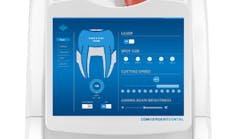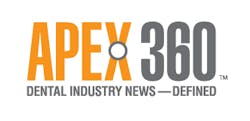How Convergent Dental achieved 2,002% growth in 3 years: Interview with CEO Michael Cataldo
Convergent Dental, maker of the Solea all-tissue dental laser, recently ranked 2nd fastest growing medical device company on Deloitte Technology’s Fast 500 after a period of 2,002% revenue growth from 2013 to 2016. I sat down with CEO Michael Cataldo to talk about what brought Convergent such notable growth, how Convergent thinks about customer satisfaction, an important part of its business philosophy, and where it’s headed in the future.
You credit much of your growth and success to customer satisfaction. What does customer satisfaction look like to Convergent? How do you measure that?
Our product is an entirely new paradigm in laser dentistry. The fact of the matter is, our customers use the laser anesthesia free more than 90% of the time. The reason we’re growing so quickly, very simply put, is that when a customer buys a laser from us they get what we promise them which means reliable anesthesia-free hard and soft tissue work, blood-free soft tissue work, and minimal patient discomfort. In turn, that ultimately leads to a lot of benefits to the dentist.
We also provide each one of these lasers with a money-back guarantee so they better be great or they’re coming back. That’s one measure. If they stay in the field, it’s a sure sign that the customer’s happy.
The other thing is, when dentists buy the laser we take them through a one-day training course, and we require them to report their first 16 procedures that they do in the first few weeks following the purchase. We track about 20 to 25 data points but the number one thing we look at is patient sensation. We have dentists report what the patient felt on a scale of 1 to 10. We shoot for an average of less than 2.5 on the pain scale. Keep in mind, slight discomfort starts at 3, and discomfort starts at 5, so we want to be even below the slight discomfort line. Our running average since inception is 1.7.
OK, so that’s how you handle dentists who already own your product. When you’re talking to prospective customers or are planning marketing to them, what are the biggest psychological obstacles or misconceptions that dentists have about laser dentistry and purchasing a laser?
One of the biggest misconceptions is that all-tissue lasers don’t work and that they don’t cut fast. The general perception is that you can’t really use them anesthesia free and they’re really slow. So in bringing our product to market, we had to get over those two big hurdles.
Psychologically, for the dentist, they’re working without a virtual safety net when using a laser, right? When they numb a patient up you can there is little risk of the patient being uncomfortable. The patient isn’t going to feel anything if you make a mistake. That’s a wonderful safety net, and if you take it away, a lot of dentists are hesitant because they don’t want to worry that a patient might possibly feel something, even though providing patients with an anesthesia-free experience changes their outlook on going to the dentist. So the biggest hurdle our customers have to get over is giving up the anesthesia safety net.
What’s behind the technology that makes Solea so reliably anesthesia-free?
Let’s start with our unique wavelength. One of the things about our wavelength is that it’s very highly absorbed in both hydroxyapatite and water. As the light comes into contact with the tooth structure, all the energy is absorbed, meaning it vaporizes it whether it’s hydroxyapatite, which makes up all your hard tissues essentially, or water, which makes up the vast majority of your soft tissue.
High absorption results in shallow penetration per pulse allows us to deliver a “light tapping” of light. We deliver thousands of pulses per second to either hard or soft tissue. That high repetition rate is important because at a thousand pulses per second, in hard tissue, you’re actually vibrating the tissues. We believe that this light tapping overwhelms the nerves, essentially closing the circuit breaker off to the brain that allows people to feel pain.
The other thing we attribute to the light tapping phenomenon is the virtually blood-free soft-tissue cutting. It’s very concentrated energy in a pinpoint-size beam, less than a quarter of a millimeter, so it’s lightly tapping on the soft tissue creating just enough heat to close off the blood vessels but not enough to char the tissue
What kinds of things are your customers doing with your products in the field?
Our customers are doing all sorts of procedures—cavity preps on virgin teeth, taking out old amalgams and taking out old composites. It is not unusual for Solea dentists to do big cavity preps, inlays, and crown preps. Solea dentists do a wide range of soft tissue work as well including frenotomies, fibroma removals, implant and tooth exposures, crown lengthenings, and more. The list goes on and on from there.
So, what can’t it do? So many technologies that dentists buy can do one or two things, and they’re good technologies with a good return on investment, right? If you buy a CAD/CAM system, you’re doing your own inlays, onlays, crowns, and surgical guides You buy a cone beam and you’re probably using that to scan primarily because you want to start doing implants.
But when you buy a Solea, there are nearly one hundred unique procedures that you can do with it. It allows the dentist to receive a return on investment in a variety of ways, not just one way, which makes for a bigger return on investment.
At the Chicago Midwinter Meeting, you announced a new version of your software (3.2). How do software updates fit into your idea of customer service?
One of the most important things about Solea is that they’re all Wi-Fi enabled, and every user who is on a support contract gets software updates delivered via Wi-Fi for free. Those software updates provide significant improvements in patient comfort, cutting speed, cutting precision, or bloodless soft-tissue surgeries. Solea Software 3.2 is a huge breakthrough because it delivered the biggest leap forward in all categories that we’ve ever had. 3.2 cuts 30 % faster and 30 % smoother. Our dentists are telling us that the onset of analgesia is almost instantaneous and very easy to manage and bloodless soft-tissue work is easier and the tissue looks healthier than ever before.
The best way to describe it is that it makes it so that any dentist can become a laser expert with Solea. The already short learning curve just got even shorter. You just point at the tissue and you press hard on the variable-speed foot pedal for hard tissue, and press soft for soft tissue.
Instead of having to switch tools or tips back and forth, you can just aim Solea and start cutting. If you’re going from hard tissue to soft tissue, you just adjust pressure on the foot pedal. There are no settings to change.
What does Convergent have planned for the next 12 months or so?
Our big improvements mostly come in these software updates. I will tell you that can anticipate another big performance leap this summer. It will likely be another 30% or even 40% increase in cutting speed. I also wouldn’t be surprised if we saw dramatic improvements in analgesia and soft tissue cutting as well.
You will also hear more about our perio capabilities. We definitely have the best in class laser for perio and we will start publishing research and showing cases that back that up. Beyond that we are working on a cavity prevention application based on 30 plus years of research, primarily from UCSF and other applications, including sleep treatments.
Editor's note: This article first appeared in the Apex360 e-newsletter. Apex360 is a DentistryIQ partner publication for dental practitioners and members of the dental industry. Its goal is to provide timely dental information and present it in meaningful context, empowering those in the dental space to make better business decisions.
Subscribe to the Apex360 e-newsletter here.
Amelia Williamson DeStefano, MA, is an associate editor in the PennWell Dental Group working on Dental Economics, RDH eVillage, RDH magazine, and Apex360.
About the Author
Amelia Williamson DeStefano
Group Editorial Director
Amelia Williamson DeStefano, MA, is group editorial director of the Endeavor Business Media Dental Group, where she leads the publication of high-quality content that empowers oral-health professionals to advance patient well-being, succeed in business, and cultivate professional joy and fulfillment. She holds a master's in English Literature from the University of Tulsa and has worked in dental media since 2015.
Updated May 16, 2023




